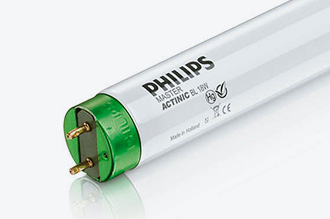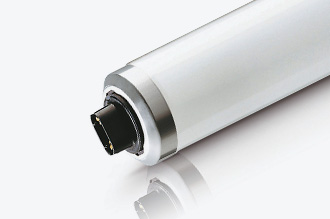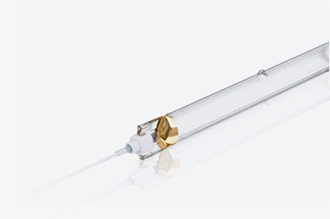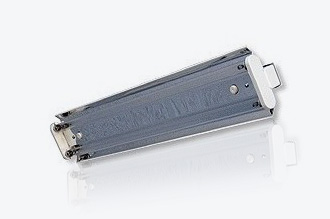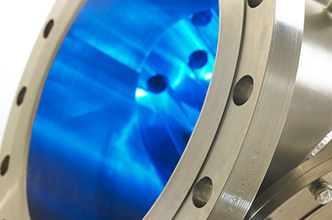UV technology
UV radiation, ultraviolet is the electromagnetic radiation of 10-400 nm wave length causing no eye sensation. Ultraviolet radiation is conventionally divided into four sub-ranges:
– UV - A waveband of 315-400 nm wave length,
– UV - B waveband of 280-315 nm wave length,
– UV - C waveband of 200-280 nm wave length,
– vacuum radiation 10-200 nm.
It can be also divided into the near radiation (200-400 nm) and distance vacuum radiation (10-200 nm) which name comes after the fact that it can be tested only in the vacuum as the waves of the adequate lengths are very strongly absorbed by the air. The photocells, photo-duplicators and radiation transducers are used for ultraviolet radiation detection. Due to the high energy of the ultraviolet radiation photons (especially B and C) absorbed by the substance can evidently influence on its physical and chemical characteristics; ultraviolet radiation can cause the photo-luminescence, photoelectric phenomenon, photo-chemical reaction (oxidization, reduction, decomposition, polymerization); is characterized by the high biological activity; influences on the D2 vitamin ergosterol transformation, liberates the production of pigment. Ultraviolet C radiation especially strongly shows its mutogenic and germicidal activity. That radiation is strongly absorbed by the nucleic acids that are the basic genetic material in the nucleus; it destroys the metabolism in a cell and can cause its destruction.
The strongest natural source of the ultraviolet radiation is Sun. However, due to the strong absorption which the radiation undergoes in the atmosphere mainly because of the ozone contained in the atmosphere, only insignificant part of Sun reaches the surface of Earth. That is why it is so important to prevent the recently observed reduction of ozone in the atmosphere. The different materials heated up to at least about 3000 K also discharge ultraviolet radiations.
Ultraviolet radiation is either registered by the human eye nor sensed by the nervous endings of human skin as it happens with the visible wave. Nevertheless, it is possible to state the existence of the radiation - under its influence the skin darkens and the tan appears.
The most common artificial sources of ultraviolet radiation are the discharge lamps (mainly mercurial). Due to its attributes, ultraviolet radiation is used - among others - in the illuminating technique (fluorescent lamps), luminescence analyze, in the non-destructive researches, in the air and water sterilization / disinfection in the premises, in microscope researches of tissues and cells in biology, in medicine, forensics, museology, in industry to accelerate the polymerization of the plastics processes.

Our offer


